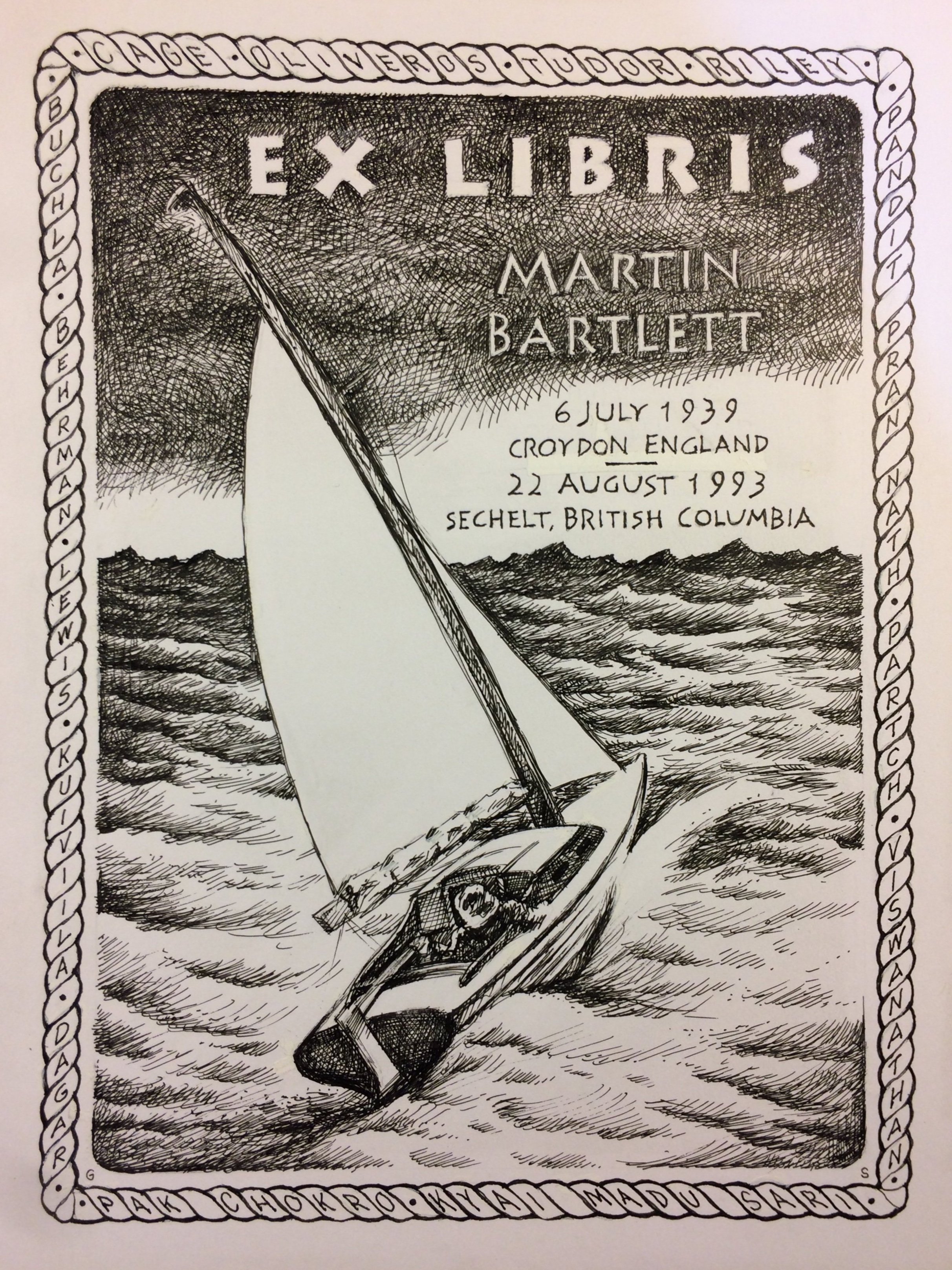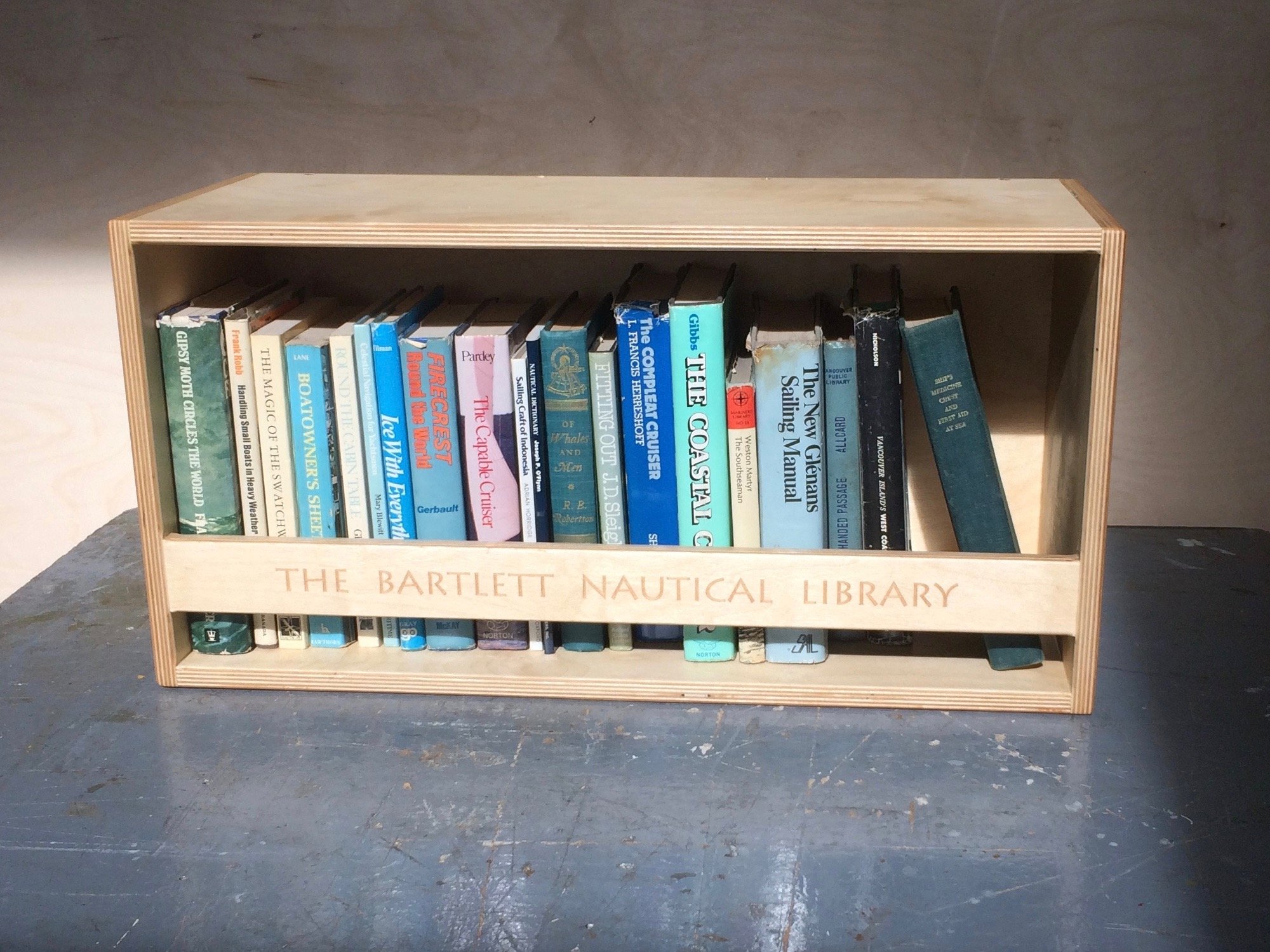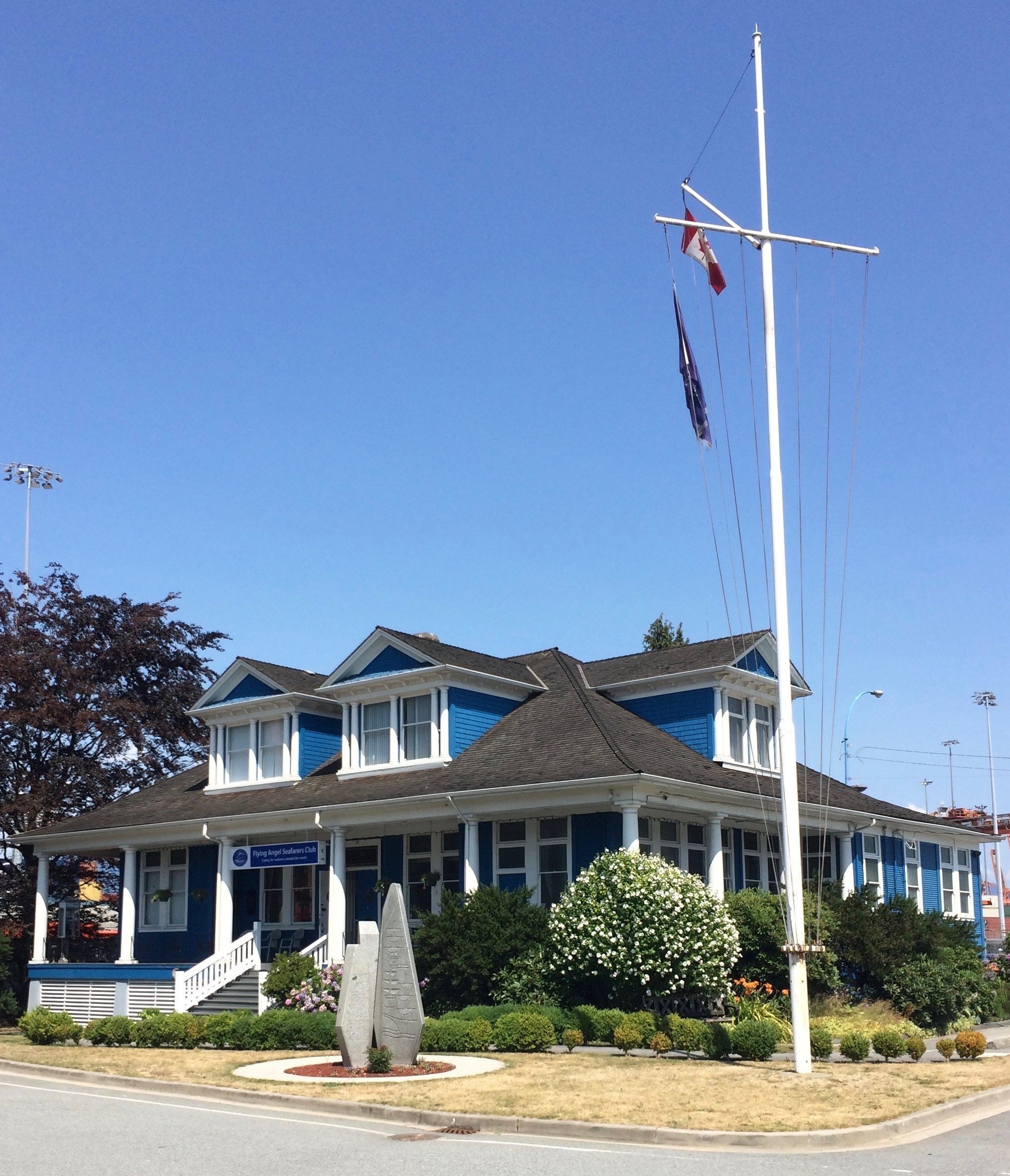The Bartlett Nautical Library
mixed media
2018
The Mission to Seafarers, 50 N. Dunlevy Street, Vancouver
A drawing of a small boat in heavy weather (based on Martin's Folkboat Svanen) with a solo sailer at the helm, was prepared; it was scanned and reduced to 4" x 6", and printed on card using a de-bossing technique, to give it some physical character. It includes Martin Barlett's name and dates, and a perimeter rope motif has the names of several of Martin's musical teachers, collaborators and influences. These plates were glued into Martin's sailing books, which were then put into a small custom bookcase with a retaining rail, on which was engraved "The Bartlett Nautical Library". This was then taken down to the Mission for Seafarers, where, with the Chaplain's approval, it was wall-mounted in one of the lounges. Visiting crew-members are encouraged to take one of the books with them aboard ship, to read and pass along; in this way the legacy of Martin Bartlett continues, on a serendipitous voyage into the global unknown.
Martin Bartlett was a musician, composer and teacher, with deep interest in musics of the world and the varieties of sonic and tonal experience they could provide, particularly in ranges of tunings, intervals and scales outside the western canon. Indian song cycles and ragas, Indonesian gamelan tunings, Pythagorean ratios he mixed through electronic synthesis and live instrumentation. His eclectic motivations ranged from Dante's Circles of Hell to Franklin's young sailors frozen in the ice of Hudson's Bay–plangent laments on too-early loss of youth and beauty and life. He died in 1993 at his home in Sechelt, north of Vancouver, British Columbia, of complications related to AIDS. He fell into a coma not long before the death he would have preferred to choose, looking out across the waters of Georgia Straight, the Salish Sea.
Among his effects was a collection of sea-faring books, mostly narratives written by cruising sailors from various parts of the world. Since coming to BC as a youth, Martin had stayed close to the water; he loved sailed and owned a variety of sailboats–wooden gaff-rigged North Sea double-enders, small three-quarter-rig Nordic lapstrakes, fibre-glass masthead sloops, pilot-house ketches. He spent his summers cruising the island archipelagos of the west coast, traveling with companions and visiting along the way. He was an experienced coastal sailor, venturing north to Haida Gwaii and south to San Francisco. The books he carried were stories of oceanic passages aboard small boats, epic tales of solo circumnavigations, hardy remote expeditions to polar regions or exotic south seas, or simple coastal logs of local exploration.
Voyaging through this small collection of books is to engage accounts of individual self-reliance and resourcefulness, mixed with thoughtful existential reflection; they serve as models of liberating independence in a world increasingly compromised, corrupted and constrained–in short, not unlike their owner. The sea offers something like that, or its illusion, for those who care to cast off.





The Mission to Seafarers
There stands in the port of Vancouver, at 50 North Dunlevy Street, a large blue-and-white heritage building, built in 1906 as a demonstration office by BC Mills Timber and Trading Co. Ltd., a sawmill producing semi-prefabricated wood buildings. It is now called the Flying Angel Seaman's Club, and is run by the world-wide Mission to Seafarers, a Christian charity founded in Britain in the 1850s. Visiting crew-members from container ships, break-bulk carriers, tankers and freighters that call at the port are met at their ships by staff of the Mission, who bring them by mini-bus back to the club where there are rooms, a chapel, gift-shop, coffee shop, clothing donations, pool-room and book exchange. A sign-in registry at the entrance lists crews and their ships; last year this mission and its sister location at Roberts Bank, a coal terminal and container port at the mouth of the Fraser River, hosted over 37,000 visitors. Many are from Indonesia, but there are representations from around the world. The Chaplain, Peter Smythe, thinks of these people as the forgotten in the maritime world of global commerce; they work for small wages, away from home for months or years at a time, with brief lay-overs in the ports of the world, where they know no-one and may not speak the language. They are the ones enabling the vast mercantile exchange that builds international corporate fortunes. Places like the mission offer them some welcome comfort and respite from their weeks and months at sea.
In 2011, the critical American artist Allan Sekula collaborated with the film theorist Nöel Burch to produce a feature-length documentary film called The Forgotten Space, about the sea and its workers and its ports as a zone of international amnesia, where those who facilitate international commerce exist in an off-shore space of lax maritime regulation, limited legal responsibility and increasingly diminished trade-union labour rights. Sekula booked ship on a container vessel, interviewing crews and port workers about their current labour conditions and what changes they had witnessed in their work over the past several decades. In discussing this film with the Chaplain, he was struck by the similarity of intention behind the film with the mission's own social initiatives and interest in the welfare of seafarers.
Porchlight, a letter-press printing operation opened last year in East Vancouver on McLean Drive, across from Woodland Park. The owner, Heather Braun, runs several classic Heidelberg presses producing custom off-set printing. Traditionally, letter-press has been used for small-edition runs of specialty jobs, like ExLibris book plates; people with substantial book collections would often commission artists to design and print eponymous plates, which were glued onto the end-papers of their books as signs of proprietary ownership.
The nature of memorial is a fugitive and fungible concept; it languishes in routine static commemorations of bronze or stone or cast language, or passing eulogies and obituaries, finite finalities that put paid to lived memory, that breathing moving thing. A tribute that reflects the actual physical being of its referent may be a difficult thing, but it is to the nature of a friend and a dynamic public art that this project is directed.
